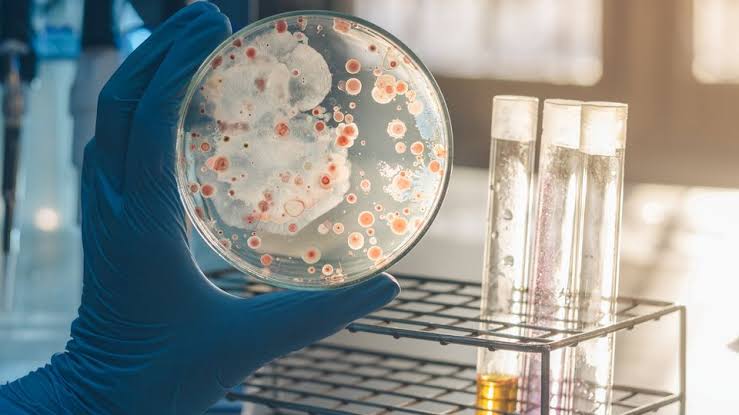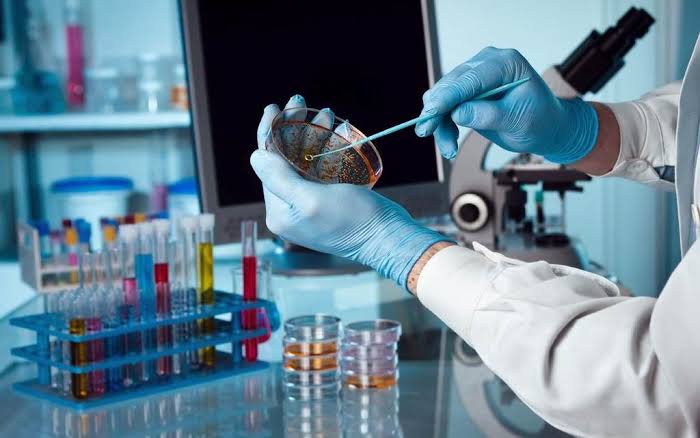
Cultural Characteristics of Skin and Pathogenesis of Skin Commensals and Pathogens
Introduction to Skin Microbiome
The skin is a complex ecosystem that hosts a diverse array of microorganisms, including bacteria, fungi, viruses, and microeukaryotes. These microorganisms can be classified into two main categories: commensals and pathogens. Commensals are typically harmless or beneficial microbes that reside on the skin, while pathogens are harmful organisms that can cause disease.
Cultural Characteristics of Skin Microbiota
- Diversity of Microbial Species: The skin microbiome is characterized by a vast diversity of microbial species adapted to various microhabitats across the body. For instance, sebaceous sites are dominated by Cutibacterium acnes, which thrives in lipid-rich environments due to its ability to metabolize sebum. In contrast, moist areas such as the armpits harbor different species like Corynebacterium.
- Environmental Adaptations: The skin’s surface presents unique challenges for microbial survival due to its cool, acidic, and often desiccated conditions. However, certain microbes have evolved mechanisms to thrive in these environments. For example, Malassezia, a genus of fungi prevalent on human skin, has adapted to utilize lipids from sebum as a nutrient source.
- Nutrient Availability: The skin provides nutrients through secretions such as sweat (which contains salts) and sebum (rich in lipids). These nutrients support microbial growth and contribute to the overall composition of the skin microbiome.
- Microbial Interactions: The interactions among microbial species can be mutualistic or competitive. Commensal microbes can inhibit the growth of pathogenic organisms through various mechanisms, including competition for resources and production of antimicrobial substances.
Pathogenesis of Skin Commensals
- Context-Dependent Behavior: While many skin commensals are beneficial under normal circumstances, they can become opportunistic pathogens when the host’s immune system is compromised or when there is disruption in the skin barrier (e.g., cuts or abrasions). For instance, Cutibacterium acnes can contribute to acne development when it overgrows in blocked hair follicles.
- Immune Modulation: Commensal microbes play a role in educating the immune system by promoting tolerance towards non-pathogenic organisms while enhancing responses against true pathogens. Disruption in this balance may lead to inflammatory conditions such as eczema or psoriasis.
- Biofilm Formation: Some commensals can form biofilms on the skin surface or within hair follicles, providing them with protection against host defenses and antibiotics. This biofilm formation can complicate treatment strategies for infections.
Pathogenesis of Skin Pathogens
- Invasion Mechanisms: Pathogenic microorganisms possess specific virulence factors that enable them to invade host tissues effectively. For example, certain strains of Staphylococcus aureus produce enzymes that break down host tissues or evade immune responses.
- Toxin Production: Many skin pathogens produce toxins that damage host cells and tissues directly or indirectly provoke an inflammatory response that contributes to tissue damage and disease symptoms.
- Disruption of Homeostasis: Pathogens can disrupt the delicate balance maintained by commensal microorganisms on the skin surface, leading to dysbiosis—a state where harmful microbes outcompete beneficial ones—resulting in conditions like dermatitis or cellulitis.
- Immune Evasion Strategies: Successful pathogens have developed various strategies to evade detection and destruction by the host immune system, including altering their surface antigens or secreting proteins that inhibit immune cell function.
In summary, understanding both cultural characteristics of skin microbiota and pathogenesis mechanisms is crucial for developing effective therapeutic approaches for managing skin disorders caused by disruptions in this complex ecosystem.
Antibiotic Sensitivity of Each Organism
1. Diphtheroids
Diphtheroids, primarily comprising species such as Corynebacterium and Propionibacterium, are generally sensitive to a range of antibiotics. Commonly used antibiotics include penicillin and erythromycin. However, resistance can occur, particularly in clinical isolates. For instance, Corynebacterium diphtheriae, the causative agent of diphtheria, is typically sensitive to penicillin but may show resistance to macrolides. It is important to perform susceptibility testing for accurate treatment recommendations.
2. Staphylococci
Staphylococci are a diverse group of bacteria, with Staphylococcus aureus being the most clinically significant. The antibiotic sensitivity of staphylococci varies widely due to the prevalence of methicillin-resistant strains (MRSA). MRSA is resistant to beta-lactam antibiotics, including methicillin and penicillin. However, it may still be susceptible to other classes such as vancomycin and linezolid. Coagulase-negative staphylococci (e.g., Staphylococcus epidermidis) are often resistant to multiple drugs but can be treated with vancomycin or daptomycin in serious infections.
3. Streptococci
Streptococci can be classified into several groups based on their hemolytic properties and Lancefield classification. Group A Streptococcus (Streptococcus pyogenes) is usually sensitive to penicillin, which remains the first-line treatment for infections like pharyngitis and skin infections. Group B Streptococcus (Streptococcus agalactiae) also shows sensitivity to penicillin but may exhibit resistance in some cases. Other streptococci, such as viridans group streptococci, can show varying sensitivity patterns; however, they are generally susceptible to penicillin and cephalosporins.
4. Propionibacterium acnes
Propionibacterium acnes, now reclassified as Cutibacterium acnes, is primarily associated with acne vulgaris. It is typically sensitive to clindamycin and erythromycin; however, resistance has been reported due to overuse of topical antibiotics. Systemic treatments often include tetracyclines (such as doxycycline) which remain effective against this organism.
5. Mycobacteria
Mycobacteria, particularly Mycobacterium tuberculosis, have a unique antibiotic sensitivity profile due to their complex cell wall structure and slow growth rate. First-line agents for treating tuberculosis include isoniazid, rifampicin, ethambutol, and pyrazinamide; however, multi-drug resistant strains (MDR-TB) pose significant treatment challenges. Other mycobacterial species may require specific combinations of antibiotics based on susceptibility testing.
In summary:
- Diphtheroids: Sensitive mainly to penicillin and erythromycin.
- Staphylococci: Variable sensitivity; MRSA resistant to beta-lactams but susceptible to vancomycin.
- Streptococci: Generally sensitive to penicillin.
- Propionibacterium acnes: Sensitive mainly to clindamycin and tetracyclines.
- Mycobacteria: Sensitive primarily to first-line anti-tuberculosis drugs; resistance can occur.
Types of Wound Infections
Wound infections can be classified into several types based on various criteria, including the nature of the wound, the causative pathogens, and the clinical presentation. The primary types include:
- Surgical Site Infections (SSIs): These occur after surgical procedures and can be superficial (involving only the skin), deep (involving deeper tissues), or organ/space infections.
- Traumatic Wound Infections: Resulting from accidents or injuries, these infections can involve open fractures, lacerations, or abrasions.
- Chronic Wound Infections: Often associated with underlying conditions such as diabetes or venous insufficiency, these wounds do not heal properly and are prone to infection.
- Burn Wound Infections: Burns create a significant risk for infection due to loss of skin integrity and exposure to pathogens.
- Pressure Ulcer Infections: Also known as bedsores, these occur in individuals with limited mobility and can become infected if not managed properly.
Pathogens of Wound Infections
The pathogens responsible for wound infections can vary widely but commonly include:
- Bacteria:
- Staphylococcus aureus: A leading cause of SSIs; it can be methicillin-resistant (MRSA) or methicillin-sensitive.
- Escherichia coli: Commonly found in traumatic wounds, especially those involving fecal contamination.
- Pseudomonas aeruginosa: Frequently associated with burn wounds and chronic ulcers due to its environmental prevalence.
- Streptococcus pyogenes: Known for causing necrotizing fasciitis in some cases.
- Clostridium species: Associated with gas gangrene in contaminated wounds.
- Fungi:
- Candida spp.: Can infect wounds in immunocompromised patients or those with prolonged antibiotic use.
- Aspergillus spp.: Rarely involved but can infect wounds in severely immunocompromised individuals.
- Viruses:
- While less common, certain viral infections (e.g., herpes simplex virus) can complicate wound healing.
- Parasites:
- Certain parasitic infections may also lead to wound complications but are less frequently encountered in typical clinical settings.
Methods of Specimen Collection for Proper Diagnosis
Proper specimen collection is crucial for diagnosing wound infections accurately. The following methods are commonly employed:
- Swab Sampling:
- A sterile swab is used to collect exudate from the wound surface. This method is quick and non-invasive but may not always represent deeper tissue infection accurately.
- Tissue Biopsy:
- A small piece of tissue is excised from the wound area for culture and histopathological examination. This method provides a more accurate representation of the infection’s nature.
- Aspiration:
- Fluid from an abscess or infected area is aspirated using a sterile needle and syringe for analysis. This method helps identify pathogens present in deeper tissues.
- Drainage Collection:
- If there is a drain present due to an abscess or surgical site, fluid collected from this drain can be sent for culture.
- Blood Cultures:
- If systemic infection is suspected, blood cultures may be taken to identify bacteremia associated with the wound infection.
- Wound Culture Techniques:
- Quantitative cultures may be performed where samples are plated on selective media to determine bacterial load and resistance patterns.
- Molecular Techniques:
- Polymerase chain reaction (PCR) assays may be utilized for rapid identification of specific pathogens when traditional cultures are inconclusive or slow-growing organisms are suspected.
Laboratory Diagnosis
Once specimens are collected, laboratory diagnosis involves several steps:
- Culture and Sensitivity Testing:
- Specimens are cultured on appropriate media under controlled conditions to allow pathogen growth followed by sensitivity testing to determine antibiotic susceptibility profiles.
- Microscopy Examination:
- Gram staining allows visualization of bacteria under a microscope which aids in preliminary identification based on morphology (e.g., cocci vs rods).
- Biochemical Tests:
- Specific biochemical tests help differentiate between bacterial species based on metabolic characteristics (e.g., catalase test).
- Molecular Methods:
- PCR-based techniques provide rapid identification of specific pathogens directly from clinical specimens without the need for culture growth.
- Histopathological Examination:
- Tissue samples may undergo histological examination to assess inflammation levels and identify any fungal elements or atypical cells indicative of malignancy or other pathologies.
In summary, understanding the types of wound infections, their causative pathogens, proper specimen collection methods, and laboratory diagnostic techniques is essential for effective management and treatment outcomes in patients presenting with infected wounds.







